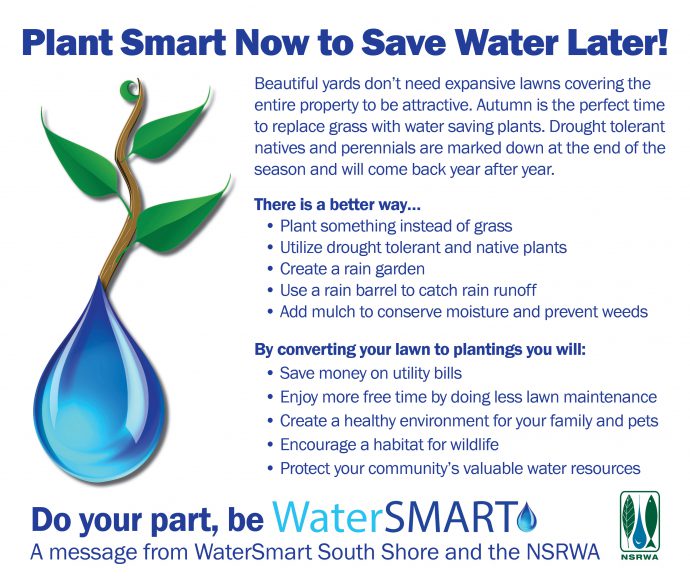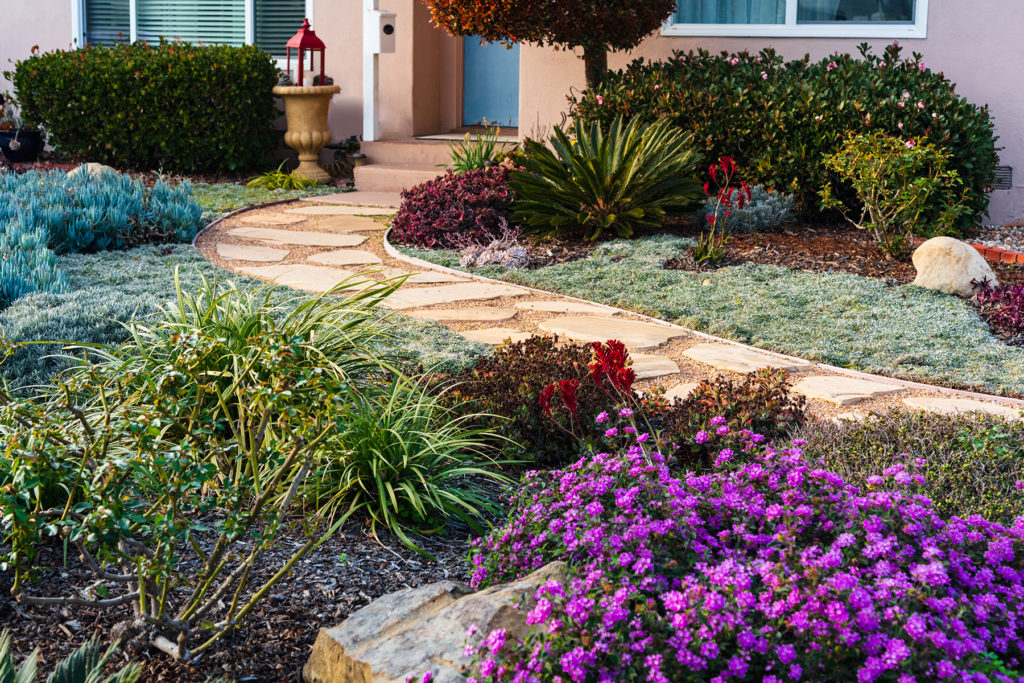
Most people think that fall is the time when everything starts to go into its winter hibernation, but autumn is also the perfect time to plant things for next year. Perennials are plants that come back year after year, and now they will have been marked down as the season ends. There are a wide variety of low-maintenance, drought-tolerant shrubs, trees, perennials, and groundcovers available at your local garden store.
Beautiful yards don’t need expansive lawns covering the entire property to be attractive. Replacing part of your lawn with planting beds, gardens, patios and walkways will add color and dimension to your landscape, while increasing your property value. By minimizing your lawn, you’re going to save time, water and money.
 There is a better way…
There is a better way…
- Plant something instead of grass
- Utilize drought tolerant and native plants
- Create a rain garden
- Use a rain barrel to catch rain runoff
- Add mulch
Watering one inch of water on a one acre yard consumes 26,000 gallons in just one watering – that is more than a standard 16’ X 32’ swimming pool! Consider planting something other than grass, as its’ maintenance is far more difficult than most any other plant. Planting beds are areas of space dedicated to various plants and flowers that require little to thrive. To achieve a successful planting bed, the idea is to choose the right plants for the right areas in your yard. Clustering plants of different species that require similar care will make watering needs much easier as it also minimizes the amount of weed growth. Going native is always the best choice when choosing plants. Native plants have adapted to the environment over centuries, and play an essential role for our pollinators, birds and other wildlife.
If having a lawn is important to you or you are looking to start small, a rain garden may be a step in the right direction. A rain garden is a bowl-shaped garden on a lower elevated area of land that collects rain and water runoff from a roof or driveway. Rain gardens provide many positives: they are easy to tend after being established; many native, low-maintenance plants thrive in these spaces; they provide value to a home while needing little water added that isn’t coming naturally from runoff; and they are poor breeding areas for mosquitoes. Mosquitoes need many days of stagnant water for a successful breeding ground that is sustainable for them while rain gardens drain within 12-48 hours.
By converting your lawn to plantings. You will:
- Save money on utility bills
- Enjoy more free time by doing less lawn maintenance
- Create a healthy environment for your family and pets
- Encourage a habitat for wildlife
- Protect your community’s valuable water resources
For more information on creating beautiful, healthy landscapes, go to the Greenscapes section on our website.
